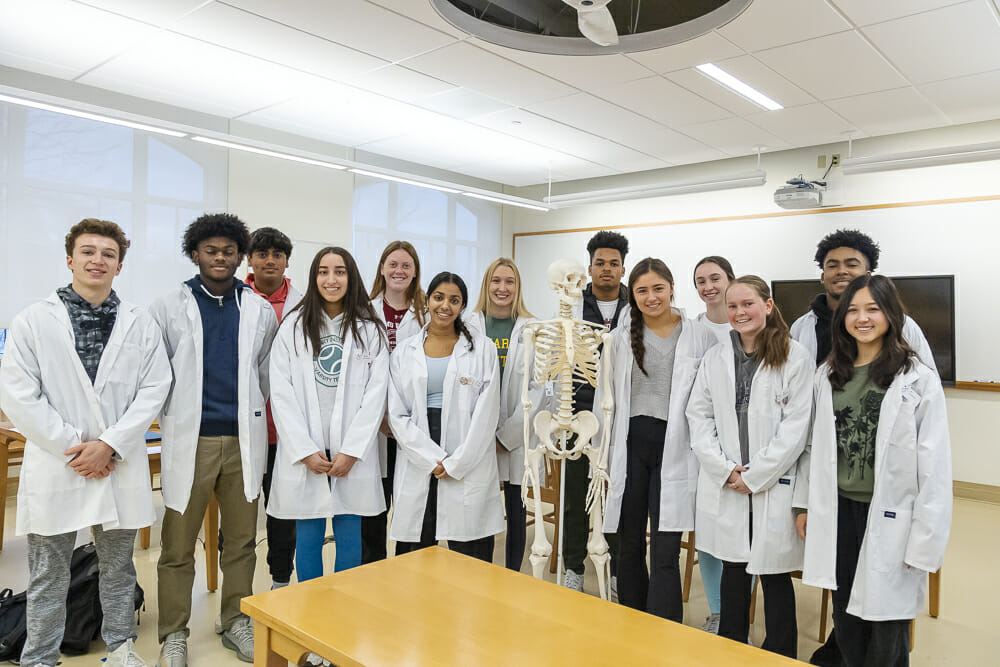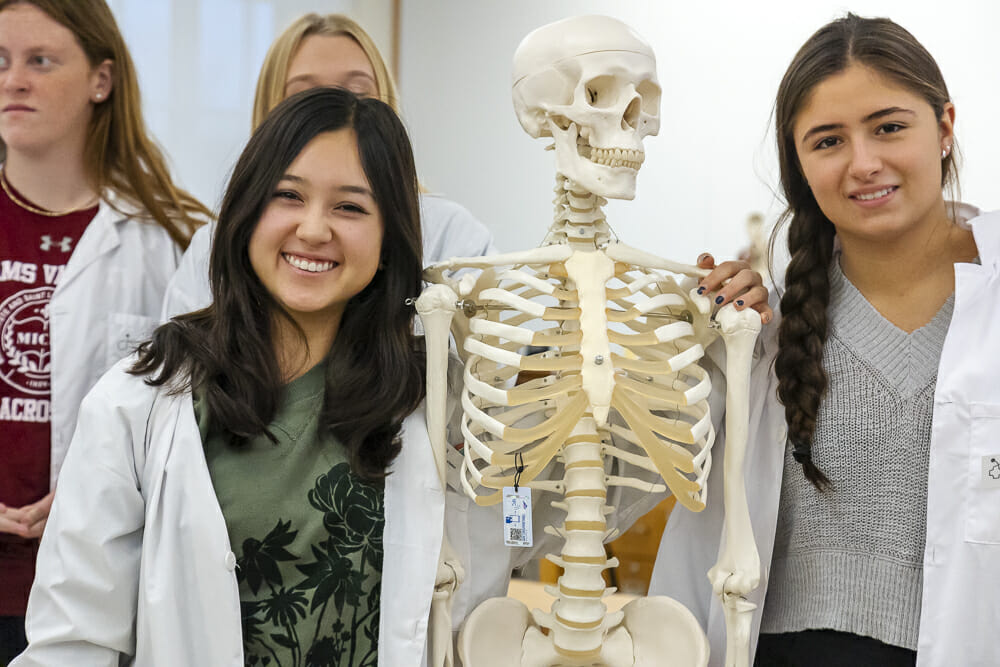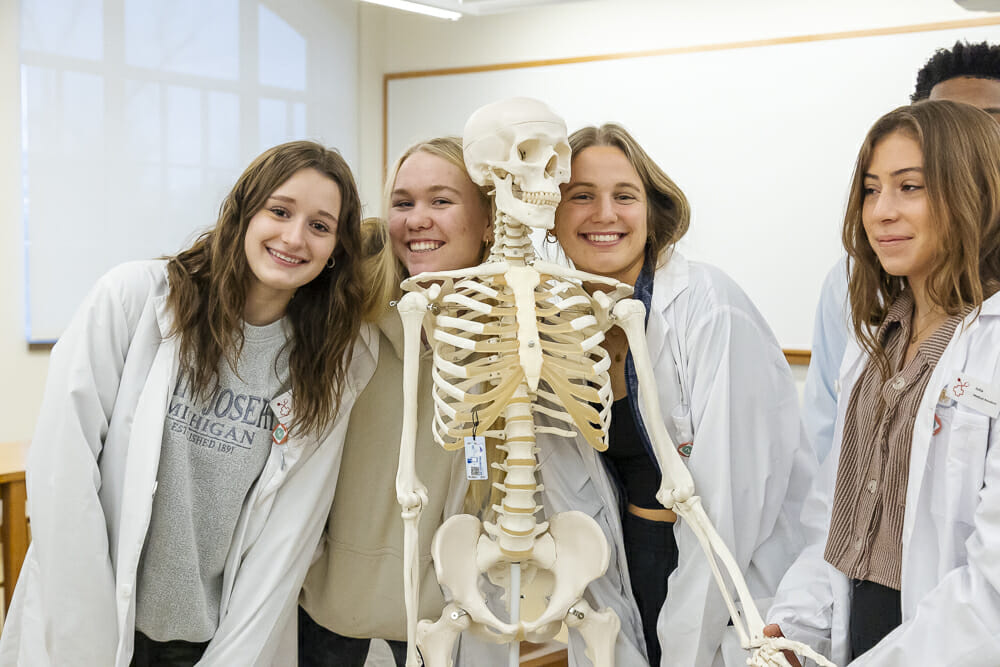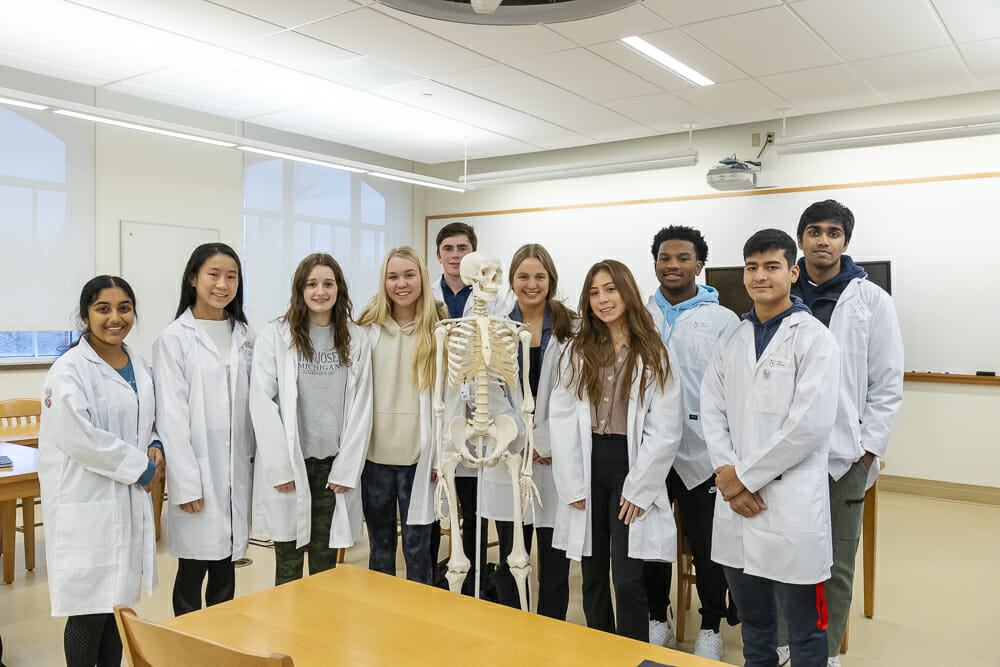Studying cadavers is not for the faint of heart. However, for Upper School Anatomy & Physiology students, a field trip to a cadaver lab was an exciting opportunity to expand their learning of human anatomy. The classes visited St. Louis University’s (SLU) Medical School for a cadaver lab presentation and to work up close and personal with a cadaver. SLU medical students lead the lab, and the visit enables MICDS students to observe and touch the structures they have learned about, ask questions, and participate in sharing what they have learned in the process.
Upper School Science Teachers Ben Krueger and Stacey Morgan lead the anatomy and physiology program at MICDS as a case-study-based adventure that examines the structures and functions of the human body and mechanisms for maintaining homeostasis within the body. They create experiences that provide hands-on learning and critical thinking and make connections between the curricular content and real-world applications.
Morgan said, “It was awesome seeing students connect what they learned in class to the actual human body. We have gone on this trip several times, and it was our first time since the pandemic. Many of our students are interested in medicine, so they also have the opportunity to ask the medical students questions. It is always interesting to see what the cadaver may present. Students also learn about the organ donation process, which is also interesting.”
Krueger added, “This is a great opportunity for high school students to see what a real cadaver looks like. Most people don’t experience a cadaver lab until they’re already in a college program, so hopefully, this allowed our students to visualize what a degree in medicine would entail.
Unfortunately (or thankfully, depending on the strength of your stomach), the lab does not allow visitors to take photos, so we can’t show in pictures how much students enjoyed the lab. But the students speak for themselves.
Skye Brothers ’23 thought it was cool to experience what they had learned in class in person. She said, “We were able to pass around a ribcage, feel a real heart and lung, and see how the knee bends and where the ACL connects to it. Also, one of the cadavers had late-stage ovarian cancer, and it was interesting to see what these cancerous tumors actually look like.”
Emma Mills ’23 had previously visited the lab over the summer, but this trip brought new information to the table. “On one of the cadavers, I saw an extensive tumor in the lower left quadrant,” she said. “The students and professors had decided it was probably ovarian cancer that the person opted not to treat. The most interesting thing I learned about was epiploic appendages. These little pockets of fatty tissue form on the outside of your small and large intestines and serve as energy storage and may also be used as protection. It was super interesting to see that one person had had their appendix removed, whereas the other did not. I was also fascinated by the central venous catheter that one of the cadavers had. Most likely, it was to treat a long-term issue; it may have even been to inject radiation fluids directly into the heart in an attempt to minimize her abdominal growth. CVCs are used for long-term treatments, especially radiation treatments, to minimize the breakdown of blood vessels, so an IV on an arm or hand is not needed for every injection. Overall, I had an amazing time at SLU’s cadaver lab and was so thrilled to be able to apply my anatomy knowledge.”
Myla Finnegan ’23 added, “The anatomy lab was such a fantastic learning experience. Being shown a Powerpoint or pig heart is helpful, but a cadaver is as real as it gets. The person who went through the demonstration included humor while showing our lifestyle choices’ real, internal effects. Personally, I had never realized how small our ovaries are and, when there’s a tumor, how massive it can get. I have known for a while that I want to study medicine in college, but watching the SLU medical student break down the anatomy of a cadaver and have her talk about how rewarding her medical school experience has been so far, shows how my goals are achievable.”



